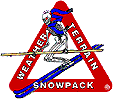Online Level 1 Avalanche Course
Module 8 Description - Avalanche Snowpack 2
Select Feedback
- The average student rating for this module, out of 10, is: 8.3
- The average student rating for this module in relation to others, out of 10, is: 7
- The percentage of students who felt all objectives were met is: 100%
- Select Student Comments:
- I particularly liked the emphasis on the “big picture” and how each of the tests would feed into the big picture, but not be the sole input.
- I've seen a lot on different snowpack test ideas and this course gave so much more insight into the pros and cons of these.
- There was a lot of important information and nothing seemed over done or under informed.
Overview
This is Module 8 of the Level 1 Avalanche Class developed and supported by AlpenPro and offered here in the Avalanche Institute. This is the second of two modules on the mountain snowpack in the Level 1 curriculum.
The prerequisite for this module is Field Day #1. It is a prerequisite for Field Day #2 and some advanced modules beyond Level 1.
The module covers the more advanced snowpack topics, both applications and theory. In a traditional class much of this material would be omitted or skimmed over in the interest of time. It tends to be some of the most interesting content for students, but it is also the least important in terms of collecting information necessary for planning and decision making. The science behind the metamorphism of snow grains within the snowpack is covered, and snowpits beyond hasty pits are introduced. Strength and stability tests are reviewed as well.
Objectives
- List some of the reasons for spatial variation on the snow surface
- List and explain the three different metamorphism processes
- Identify crystals from photos, limited to simple forms resulting from one dominant process
- Explain how weak layers ultimately gain strength
- Explain why weak facetted crystals often form adjacent to a crust interface
- Explain why certain processes dominate in certain climate regimes
- List the factors that make snowpits relevant and those that make them irrelevant
- Observe the most basic and relevant parameters in a snowpit
- Create and/or interpret basic snowpack profiles
- Given a snow profile identify the climate it was most likely observed in
Topics
This module covers three general topics:
- Metamorphism of seasonal snow
- Snowpits and Profiles
- Strength and Stability Tests
Each of these is broken down further into sub-topics within the course, the Outline on this page shows more detail.
Outline
Welcome, Instructions
Introduction
Context
Metamorphism of Seasonal Snow
- Overview of Metamorphism
- The Basic Science
- Kinetic Crystal Growth
- Equilibrium Crystal Growth
- Melt-Freeze Metamorphism
Snowpits and Profiles
- Overview of Snowpits
- Hasty Snowpits
- Detailed Snowpits
Strength and Stability Tests
- Overview of Stability Testing
- Shovel Shear Test
- Rutschblock Test
- Compression Test
- Shovel Tilt Test
- Other Tests
Wrap-up and Review
Human and technical Resources
This module has complete access to human resources and technical support. There are numerous ways to contact an instructor and to interact with other students. The module has its own forum for questions and discussion, there is a drop box for sending documents (including messages) to other students in the module and/or an instructor, there is a messaging system accessed from the top of the web interface, and there is always email.
Assessment
There are quizzes incorporated into this course which allow students to check their understanding of the material. Quizzes may be taken as many times as desired, either to obtain a passing score or just to attempt to ultimately get a perfect score.
Quizzes are taken and scored online.
Successful completion of this module requires passing all assessments.
Course material
Most of the materials included in this module are from a workbook developed and used by AlpenPro. A few items are from the Avalanche Center website. Links are provided to external resources where appropriate.

 Avalanche Institute Home
Avalanche Institute Home